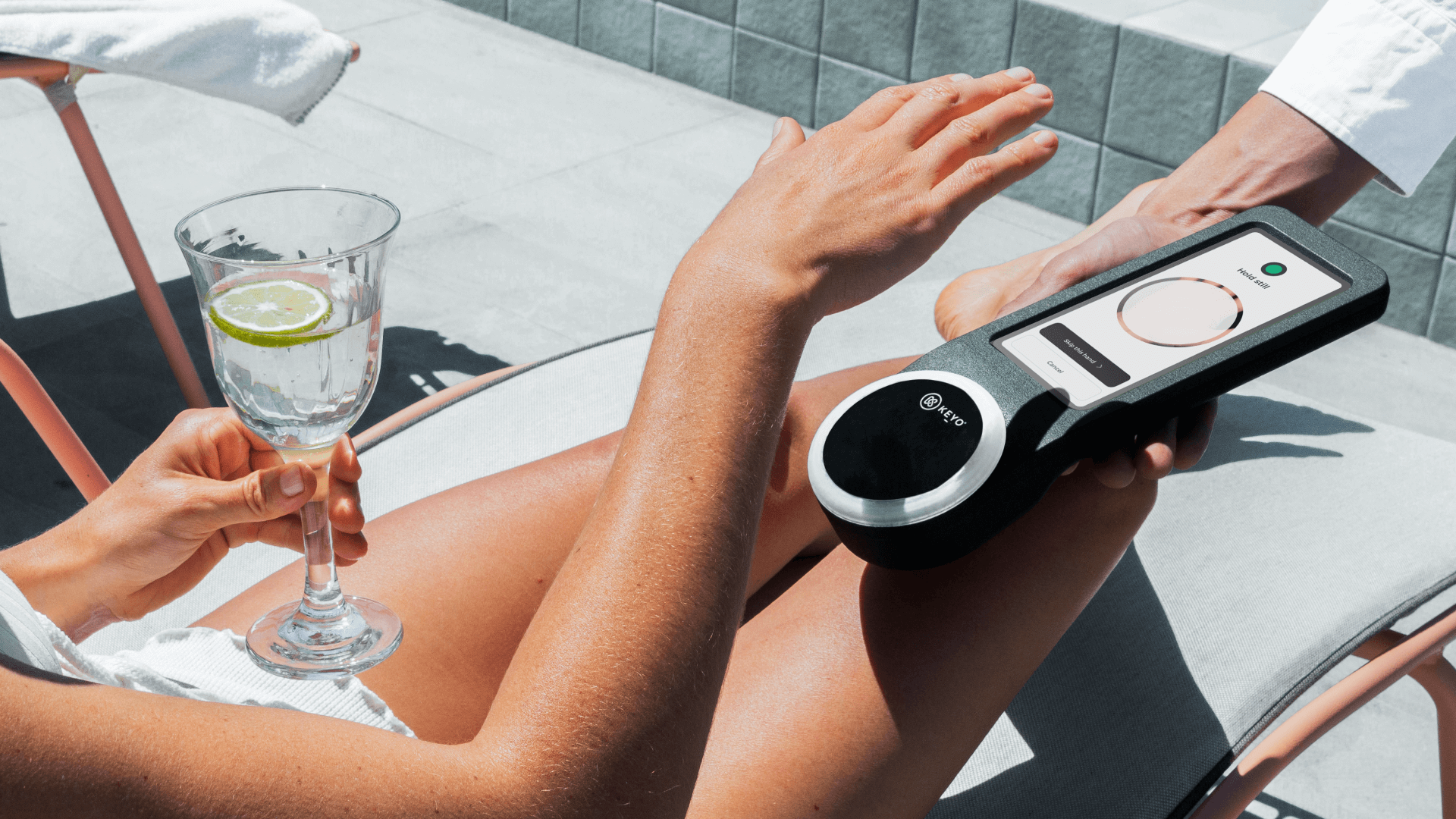
Palm Print vs. Palm Vein Scanning: Why Keyo Does Both
With a simple wave of the hand, you can now make payments, access tickets, or check in at a hotel. Palm biometrics, the technology that powers all of these experiences, is growing quickly thanks to its security, speed and ease of use. Keyo is a pioneer in biometric authentication, offering an innovative approach to palm biometrics by integrating both palm print and palm vein scanning.
But why do we use both? In this article, you’ll learn more about palm biometrics and why Keyo leverages both palm print and palm vein data to create the safest and most accurate biometric identifier on the market.
The Power of Your Palm
Palm biometrics is like a password. It safely allows you to prove who you are and access what belongs to you, but instead of using numbers or letters to log in, you're using characteristics on your palm to generate a distinct ID. Our hands harbor millions of data points both externally and internally. From palm prints to vein patterns, every detail is a unique identifier. This is why biometric systems like palm print and palm vein scanning are gaining global momentum as cutting-edge, secure, and reliable identification methods.

What is Palm Print Scanning?
Palm print scanning captures the intricate details of your palm's surface using advanced cameras. This process focuses on three critical layers to establish a unique biometric signature:
- Primary Lines: The prominent lines are often associated with palm reading.
- Secondary Lines: Subtle lines visible to the naked eye.
- Epidermal Ridges: Delicate, finger-print-like lines covering your entire palm.
These millions of mapped data points form a sophisticated and secure method for identification, offering accuracy that traditional passwords or PINs cannot match.
How Does Palm Vein Scanning Work?
In contrast, palm vein scanning goes deeper—literally. Using a special camera that can see infrared light, it maps the vein structure nestled within your palm, creating a secure and encrypted biometric ID. These vein patterns, invisible to the naked eye, offer an unparalleled level of security. Unlike external biometrics, your vein pattern is never exposed unless you willingly scan your palm at a Keyo terminal, so your unique biometric code remains shielded from the outside world.
Palm vein technology is highly secure and privacy-focused, making it an excellent tool for liveness detection and identity matching at smaller scales, such as tens of thousands of users. However, it lacks the capacity to handle the extensive data demands required for scaling to millions.
Why Keyo Does Both
Keyo's unique and custom-built palm scanners harness the power of both palm print and palm vein technologies. Here's why:
Double Authentication
Keyo’s dual-layer authentication merges external and internal biometrics, analyzing millions of data points from the surface and beneath your skin. This approach prevents unauthorized access, providing peace of mind and security assurance like never before.
Scalable Solution
The combination of palm print and palm vein scanning is great not only for the privacy and security of our biometrics but also enables Keyo to scale effortlessly in large populations. From securing high-traffic buildings to facilitating seamless transactions, Keyo’s system adapts to the growing demands of modern business environments without compromising safety or efficiency.
Palm Biometrics in Action
Global partners are integrating biometric authentication into their products and services with Keyo's plug-and-play biometric solutions. Keyo’s customizable and privacy-compliant platform helps enable fast, easy, and exciting customer experiences such as:
- Fast payments
- Efficient ticketing
- Touchless time and attendance
- Exciting loyalty and rewards programs
- Easy access control
For more information about Keyo's comprehensive, fully integrated product suite, contact our team at hello@keyo.co or www.keyo.com